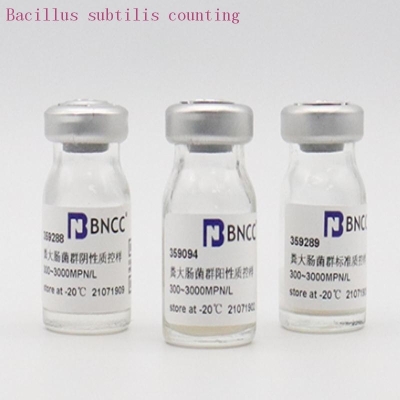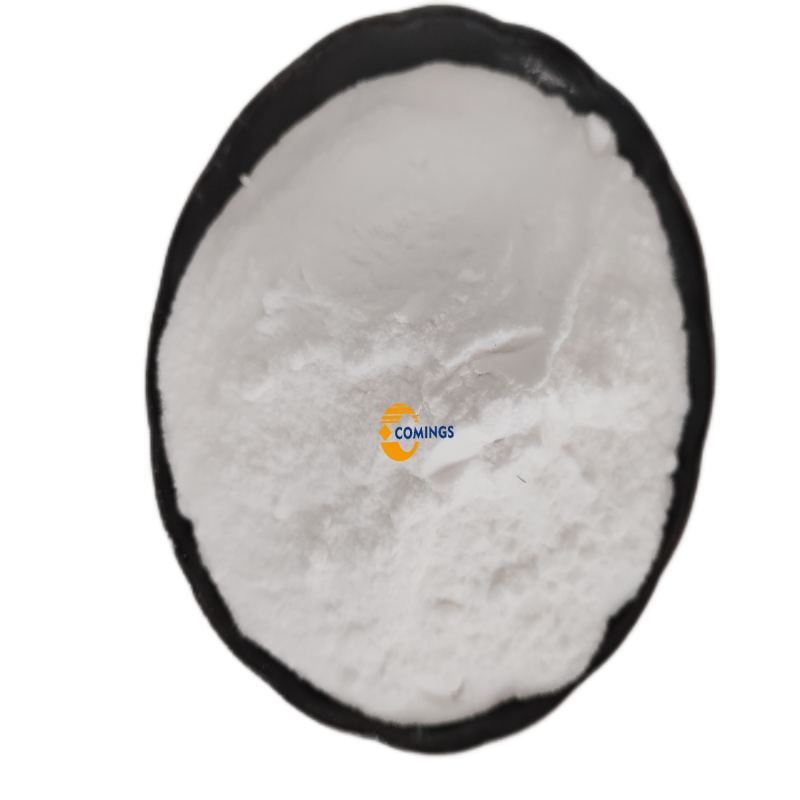Advances in microbial fermentation of oil-tea seed meal
-
Last Update: 2020-06-21
-
Source: Internet
-
Author: User
Search more information of high quality chemicals, good prices and reliable suppliers, visit
www.echemi.com
China's oil tea cultivation area of 4 million hm2, annual production of oil tea seeds about 650,000 t, oil tea seed oil more than 150,000 tAs a by-product of oil tea seed, the amount of oil tea seed meal is about three times the same as oil tea seed oil, but because of the taste of oil tea seed meal, and contains tannins, tea soap and other anti-nutrition substances, is basically used as fertilizer, fuel and even abandoned, resulting in a great waste of resourcesWith the rapid development of China's aquaculture industry, the demand for protein feed is increasing, the main sources of plant protein in China are corn protein powder, soybean cake meal, tea seed cake meal, but the conditions for protein feed are not yet mature, the source of animal protein in China generally depends on importsIf we want to solve the problem of protein feed shortage, we need to turn our attention to microbial protein feedThe use of oil tea seed meal for microbial fermentation production feed can not only alleviate the demand of protein feed in the aquaculture industry, but also reuse the waste oil tea seed meal, increasing economic and social benefitsfirst, the composition of oil tea seed mealtea cake is rich in protein, sugar, coarse fiber and minerals, but the presence of hemolytic tea soap innotation not only affects the palatability of the feed, but also causes animal gastrointestinal poisoning, liver damage, convulsions and coma, and even deathPolyphenols such as tannins and flavonoids in oily teaseed cake can lead to reduced protein digestion and interfere with the absorption of certain nutrients (e.gFe, Ca, etc.)In addition, tannin taste bitter, will affect the appropriate taste of the feedTherefore, the tea seed cake meal needs to be detoxifiedthe second, tea seed cake meal microbial fermentation researchthe current tea seed cake detoxification treatment methods are mainly physical, chemical, microbial fermentation and comprehensive methodsAmong them, chemical and microbial fermentation method is the most common, chemical detoxification is high cost, process complex, equipment requirements are high, and after the extraction of tea seed cake meal still contains a certain amount of tea saponin, for further utilization caused difficulties, and microbial fermentation method is considered to be the most promising treatment methodFor the microbial fermentation treatment of tea seed cake, on the one hand, it is necessary to degrade the anti-nutrition substances such as tea soap in tea seed cake and tannins, and on the other hand, it is necessary to improve the content of nutrients such as protein in tea seed cake1, bacteria selectionthe key to the fermentation of tea seed cake microbial fermentation is the choice of bacteria species Different species have different effects on the degradation of tea soapin and the improvement of nutrient content such as protein The selection of highly effective microbial strains is the prerequisite for microbial fermentation At present, the bacteria used in microbial fermentation treatment of tea seed cake at home and abroad are mainly the species that exist in nature and the artificial screening of the bacteria horsepower and other oil tea dead cake as raw materials, the choice of black crank mold as an indication of bacteria, through the flat-point test, and according to the stimulation ring test and triangular bottle fermentation culture, to obtain the oil tea dry cake production protein feed the best seed combination: black chardy, lichen spore 10181, grape juice yeast 1445, rice crackmold Deng Guilan to oil tea meal as the main raw material, mold and yeast composed of mixed bacteria as fermentation bacteria, the study shows that: tea after fermentation of crude protein content increased, and crude fiber content is reduced, is a better protein feed The detoxification and fermentation techniques of oil tea dead cake were studied, and the results showed that the protein content of the oil tea dead cake was improved to a certain extent after the solid fermentation of black-cranked mold, wool mold and 117 false silk yeast Zhou Haoyu and other oil tea seed meal as the main raw material, to dry grass spore bacteria, black clostridium mold, false silk yeast as fermentation bacteria, the study of single bacteria and mixed bacteria solid fermentation of oil tea seed meal in the degradation rate of various anti-nutrition factors, research shows that: after fermentation of tea sapin, total phenol and coarse fiber are degraded, the content of crude protein increased, and mixed fermentation effect is better than single bacteria fermentation Zhou Haoyu and other tea soap water as the main raw material, the natto sprout stobacillus, false silk yeast, dead grass bud cytobacteria, penicillin, rice cone, lichen bud bacillus tea sapin degradation ability, research shows that: the above species can degrade tea soapin, and the rapid degradation rate of mold, the largest degradation rate Practice Jie and other tea seed meal as raw materials, the use of spores, black clostridium mixture of bacteria for solid fermentation, research shows that: under appropriate conditions mixed bacteria on the detoxification effect of tea seed meal is obvious 2, the effect of microbial fermentation of oil tea seed meal after microbial fermentation of oil tea seed meal, the content of anti-nutritional components such as tea soapin, tannins and other significantly reduced, the palatability is improved; Zhou Haoyu and other fermented fermentation of oil tea seed meal with erythropoietin, black clostridium mold, and false silk yeast for fermentation, the results show that the fermentation effect of mixed bacteria is better than single bacteria fermentation, and the degradation rate of tea soapin, total phenol and coarse fiber reached 87.63%, 87.87% and 37.29%, respectively, and the crude protein content increased by 6.98% After fermentation of oil tea with dry cakes, crude protein content was 16.94 percent, which was 56.56 percent higher than 10.82 percent when unfermented Deng Guilan took the mixture of mold and yeast as the fermentation bacteria, the crude protein content after fermentation of oil tea was increased from 17.2% to 32.7% before fermentation, and the crude fiber content decreased from 19.2% before fermentation to 9.7% Zhou Haoyu and other tea soap water as the main raw material, the study of tea soapin degradation rate of various species found that the degradation rate of penicillin, lichen bud cytobacteria, natto sprout sycobacteria, false silk yeast to oil tea soapin degradation rate can reach more than 66%, with the highest degradation rate of penicillin, compared with natural degradation, can make the degradation rate of oil tea soap in the tea soap rate increased by 60.24%, after optimization of culture can make the degradation rate of tea soap The solid fermentation of tea seed meal by using bacillus spores and black-steryly mold mixed bacteria, and the soap-removal rate of tea seed meal under the optimal process conditions (93.28 to 0.34 percent) 3, the process conditions of microbial fermentation of oil tea seed meal different species of oil tea seed meal in the degradation of tea saponin and the improvement of protein, the same species in different process conditions on the fermentation of oil tea seed meal effect is also different The main process conditions affecting the microbial fermentation of oily teaseed cake are fermentation moisture, temperature, pH, time and inoculation In the process of microbial fermentation of tea seed cake, the best effect of fermentation can be obtained only by controlling these process parameters within the appropriate range Zhou Haoyu and other use of microbial fermentation method to detoxify oil tea seed meal, the use of dead grass spores, black clostridium mold, false silk yeast as a composite species, the total inoculation amount of 10% (3 species of bacteria ratio of 1:1:1), the incubation cycle is 8d, oil tea seed after fermentation of the best anti-nutritional factor removal effect, crude protein extraction rate is the largest Horsepower and so on through the flat-point test, according to the stimulation ring test and triangular bottle culture, obtained the oil tea dead cake fermentation yield high protein optimal inoculation ratio: lichen spores 10181: black courum: grape juice yeast 1445: rice cone s1:1:1:1 Deng Guilan in the study of fermentation production of bacterial protein feed found that when the composite bacteria selected AS3.4309 , AS3.800 , AS3.3711 , AS2.281, the medium formula for oil tea seed meal 12.5g, blood powder 2 5g, KH2P04 0.1%, MgSO4 0.05%, water 20mL, the total inoculation volume is 10% (mold and yeast vaccination ratio of 1:1), the incubation cycle of 4d, oil tea after fermentation collected the most bacteria dry weight Zhou Haoyu and so on through the optimization of the orthogonal test of culture conditions, the best process conditions for degradation of tea soapin for the culture temperature of 28 degrees C, 12% of the inoculation, pH4.5, culture cycle 5d Through single-factor test and Box-Behnken test design and response surface analysis to optimize the mixed bacteria solid-state fermented tea seed meal, the optimal process conditions are: 12.5% inoculation, 52% moisture content, fermentation time 3.9d microbial fermentation detoxified production protein feed biodegradable oil teaseed cake in tea soap in and tannins and other anti-nutrition substances, improve the protein content of feed Fermented oil tea seed meal is not only rich in protein, sugar and other nutrients, a small amount of tea soap can also promote the growth of animals, enhance disease resistance, is high-quality protein feed At the same time, tea seed cake meal microbial fermentation raw materials are rich, not affected by seasonal, climatic and natural disasters, production cycle is short, equipment requirements are low, low production costs, is a rare method of feed production, in China's future development of aquaculture industry has broad prospects for development
This article is an English version of an article which is originally in the Chinese language on echemi.com and is provided for information purposes only.
This website makes no representation or warranty of any kind, either expressed or implied, as to the accuracy, completeness ownership or reliability of
the article or any translations thereof. If you have any concerns or complaints relating to the article, please send an email, providing a detailed
description of the concern or complaint, to
service@echemi.com. A staff member will contact you within 5 working days. Once verified, infringing content
will be removed immediately.






